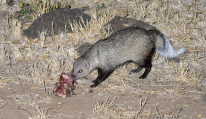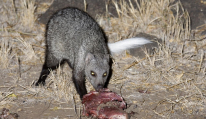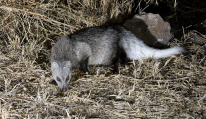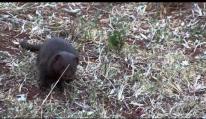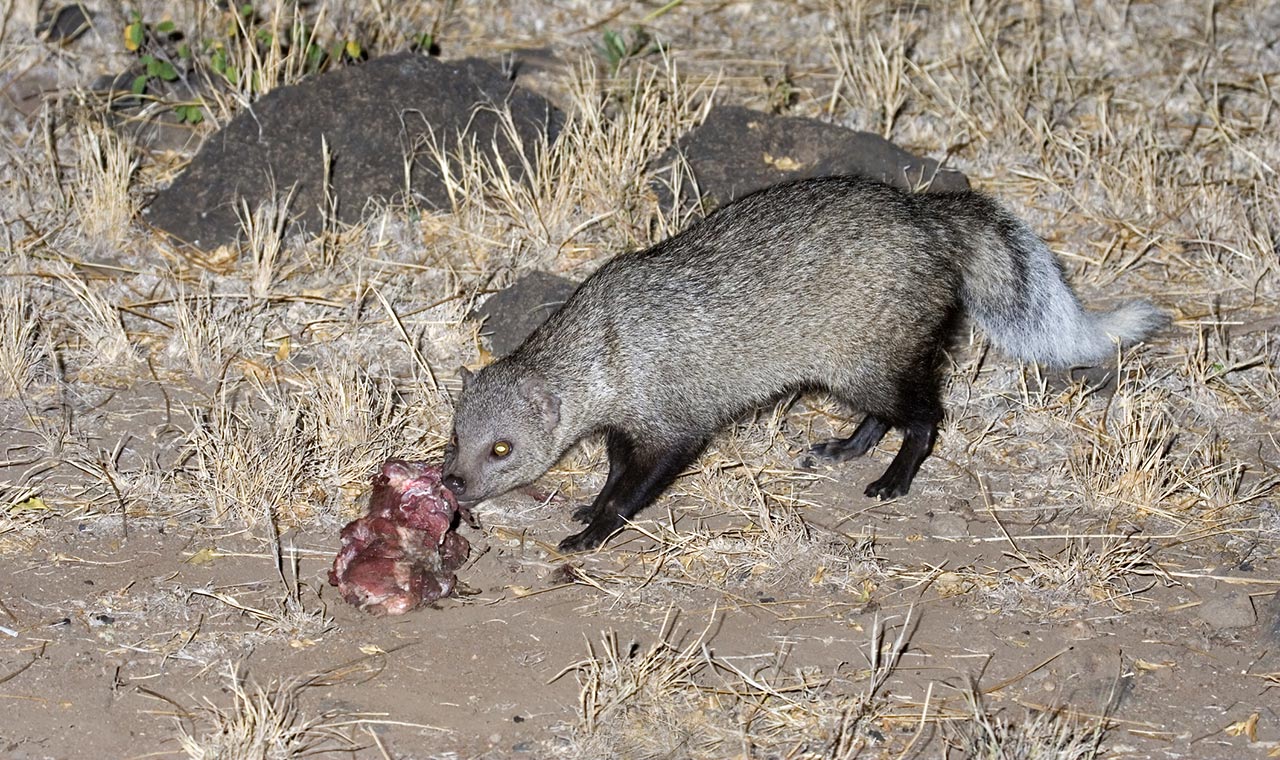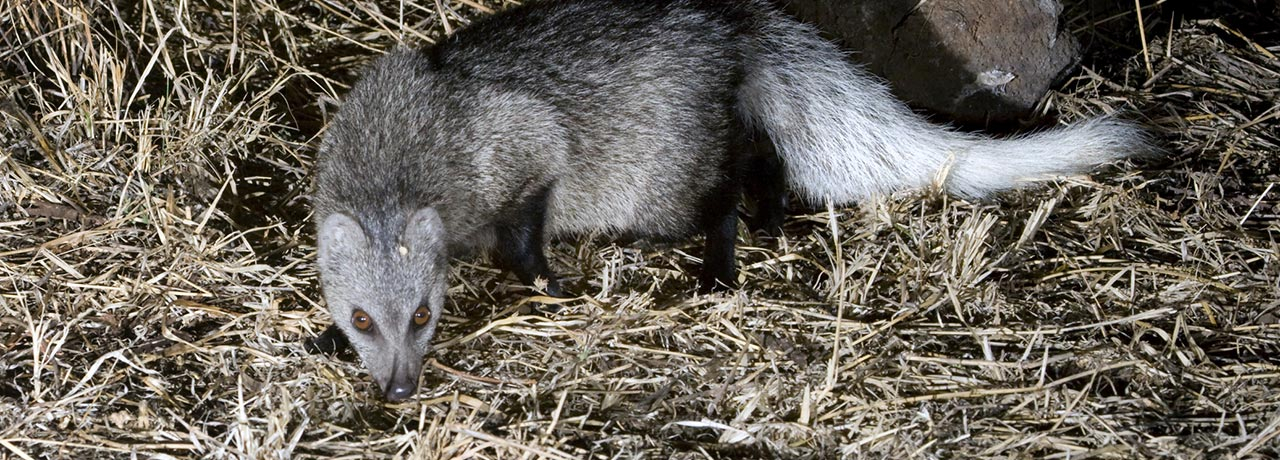Social Structure
White-tailed mongooses lead mainly solitary lives, living in groups primarily when they’re very young and when they’re mating. White-tailed mongooses may forage near each other in areas where a lot of food is available, but they aren’t social the way some other mongooses are. When they encounter members of their species, unless they’re interested in mating, they usually just sniff each others noses, then go on their way. Both males and females are territorial, though male territories frequently overlap female territories. Like other mustelids, they delineate their territories by scent-marking. Territories tend to include several denning sites, and adults may use the same den for 5 to 15 days before moving to a new one.
Communication
Although largely silent, white-tailed mongooses do make high-pitched chittering noises and loud bark-screeches when they’re scared or upset.
Behavior
Primarily nocturnal, white-tailed mongooses rest during the heat of the day in burrows, but don’t actually dig their own. Instead, they use aardvark or springhare burrows, or holes in termite mounds or in tree trunks. They hunt for six to eight hours every night, traveling as far as 2.5 to 3 miles (4 to 5 km) while patrolling their home range.
Conservation
The International Union for Conservation of Nature (IUCN) lists white-tailed mongooses as a species of lower risk. They are widespread and seem to thrive near humans.




